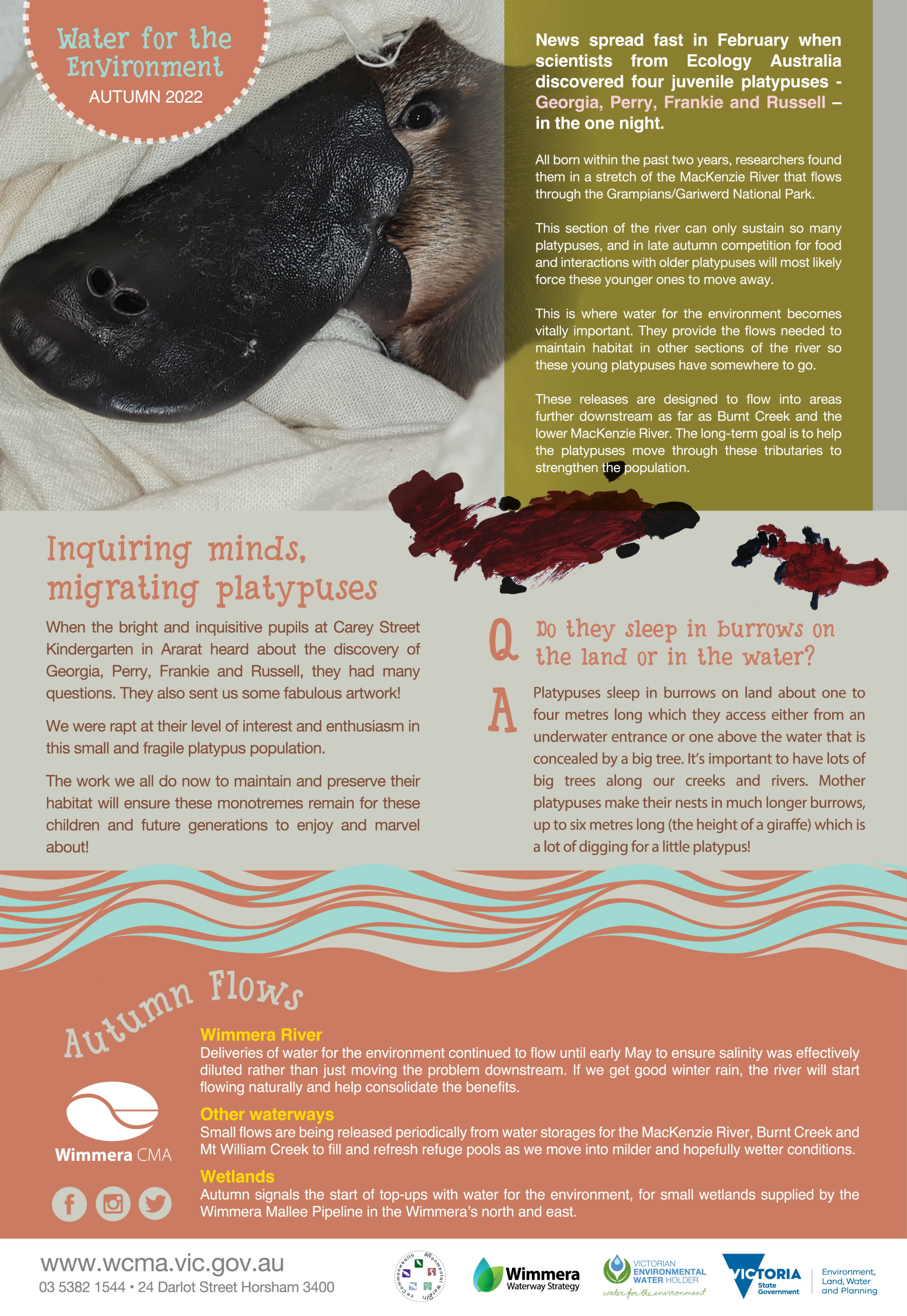News spread fast in February when scientists from Ecology Australia discovered four juvenile platypuses - Georgia, Perry, Frankie and Russell – in the one night. All born within the past two years, researchers found them in a stretch of the MacKenzie River that flows through the Grampians/Gariwerd National Park.
A text-copy of the full update is available below the image for easy reading.

News spread fast in February when scientists from Ecology Australia discovered four juvenile platypuses - Georgia, Perry, Frankie and Russell – in the one night. All born within the past two years, researchers found them in a stretch of the MacKenzie River that flows through the Grampians/Gariwerd National Park.
This section of the river can only sustain so many platypuses, and in late autumn competition for food and interactions with older platypuses will most likely force these younger ones to move away.
This is where water for the environment becomes vitally important. They provide the flows needed to maintain habitat in other sections of the river so these young platypuses have somewhere to go.
These releases are designed to flow into areas further downstream as far as Burnt Creek and the lower MacKenzie River. The long-term goal is to help the platypuses move through these tributaries to strengthen the population.
Inquiring minds, migrating platypuses
When the bright and inquisitive pupils at Carey Street Kindergarten in Ararat heard about the discovery of Georgia, Perry, Frankie and Russell, they had many questions. They also sent us some fabulous artwork! We were rapt at their level of interest and enthusiasm in this small and fragile platypus population. The work we all do now to maintain and preserve their habitat will ensure these monotremes remain for these children and future generations to enjoy and marvel about!
Q Do they sleep in burrows on the land or in the water?
A Platypuses sleep in burrows on land about one to four metres long which they access either from an underwater entrance or one above the water that is concealed by a big tree. It’s important to have lots of big trees along our creeks and rivers. Mother platypuses make
their nests in much longer burrows, up to six metres long (the height of a giraffe) which is a lot of digging for a little platypus!
AUTUMN FLOWS
Wimmera River
Deliveries of water for the environment continued to flow until early May to ensure salinity was effectively diluted rather than just moving the problem downstream. If we get good winter rain, the river will start flowing naturally and help consolidate the benefits.
Other waterways
Small flows are being released periodically from water storages for the MacKenzie River, Burnt Creek and Mt William Creek to fill and refresh refuge pools as we move into milder and hopefully wetter conditions.
Wetlands
Autumn signals the start of top-ups with water for the environment, for small wetlands supplied by the Wimmera Mallee Pipeline in the Wimmera’s north and east.
|






